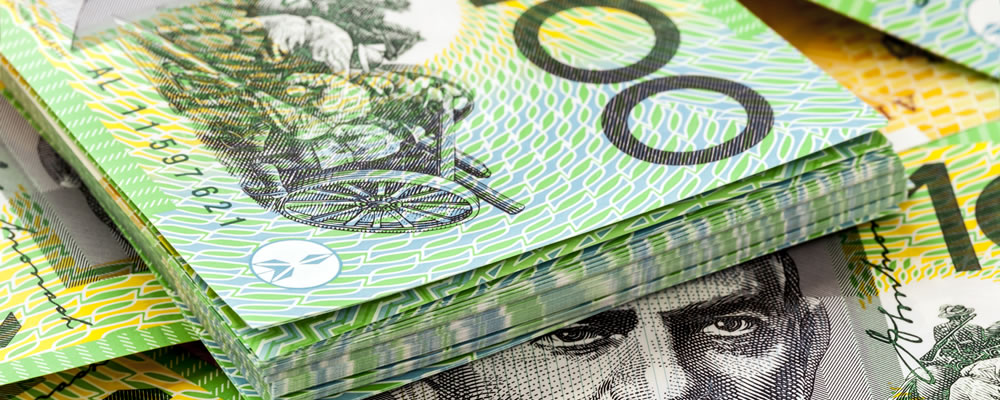- Euro Australian Dollar 2016 Exchange Rate Near 1.44 – Gains on ‘Aussie’ selloff
- Euro Firms Ahead of ECB Meeting – Lower populism concerns also keep EUR afloat
- EUR Forecast: European Central Bank to Extend Easing – If it doesn’t the Euro will soar on Thursday
- AUD Forecast: Will Iron Ore Bullishness Resume? – Some expect commodity to reach US$80 per tonne again
Euro Australian Dollar 2016 Exchange Rate Firms Ahead of Thursday’s ECB Meeting
The Euro Australian Dollar 2016 exchange rate trended within a tighter range on Wednesday afternoon as Eurozone traders readjusted and firmed their positions on the shared currency ahead of Thursday’s highly anticipated European Central Bank (ECB) meeting.
Concerns about uncertainty in Italy were ongoing, as Italian Prime Minister Matteo Renzi clarified his intention to formally resign from his role on Wednesday evening.
The Australian Dollar’s Wednesday selloff also cooled slightly, allowing the ‘Aussie’ to recover from its worst levels towards the end of the European session.
EUR AUD was on track to end Wednesday’s European session around 0.3% higher, but the pair could easily fall from this level on Thursday after the ECB’s meeting if bank officials announce an extension to its stimulus package.
(Published 11:48 GMT 07/12/2016)
The Euro Australian Dollar 2016 exchange rate is advancing despite Eurozone populism concerns, as traders sell off the ‘Aussie’ en masse due to a shocking contraction in Australia’s GDP.
On Wednesday, EUR AUD was able to hold its ground near the key level of 1.44, but as the Euro’s gains were part of a relief rally rather than bullishness it was unable to advance much farther.
Euro (EUR) Bought from Lows as Protectionism Fears Wane
The Euro has firmed this week, largely thanks to a change in sentiment following the weekend’s Eurozone political votes.
While investors had feared that Italy would vote ‘No’ in its constitutional referendum, the reality was that most political analysts found it unlikely that Italy would see a shock election should those fears be realised, with most instead predicting that a new government would be formed from the current one.
Austria’s citizenship also voted decisively against the far-right candidate Norbert Hofer despite the pro-European rhetoric of victorious Alexander Van der Bellen – indicating to many traders that the Eurozone was not necessarily on track to becoming entirely anti-EU as feared.
As a result, traders spent the early parts of the week buying the shared currency up from its cheapest levels after last week’s selloffs. Tuesday’s Eurozone Gross Domestic Product (GDP) results also impressed investors.
Tuesday’s Q3 Eurozone GDP results, which were expected to meet preliminary figures of 1.6% year-on-year, came in with a better-than-expected result of 1.7%.
While the Euro benefitted from this news, it was also weakened slightly by concerns that Italy could still have an early election. Italy’s Interior Minister stated on Tuesday that an election could be possible as soon as February 2017, which caused nervousness in some Euro trade.
Australian Dollar (AUD) Plummets as Economic Contraction Worse than Expected
The Australian Dollar, on the other hand, has faced a load of largely unseen downside factors this week, so investors have sold it against the Euro.
Investors initially expected the Reserve Bank of Australia (RBA) to maintain a neutral outlook towards monetary policy at the beginning of the week – which they did.
However, they also indicated that the Australian economy was likely to slow considerably in late 2016. While the bank showed little concern about this, investors grew increasingly jittery once economists began to forecast that the economy was actually on track to contract in Q3 2016.
This led to the ‘Aussie’ performing poorly on Tuesday, allowing EUR AUD to hit its best levels since early-November.
When Australia’s final Q3 Gross Domestic Product (GDP) results were posted during Wednesday’s Asian session, they came in even worse-than-expected.
Australia’s economy was expected to contract at -0.1% quarter-on-quarter but instead printed a shocking -0.5% contraction. The year-on-year score also disappointed, slowing from 3.1% to 1.8%.
Prices of iron ore, Australia’s most lucrative commodity, have seen bullish forecasts in recent days with analysts expecting prices to hit US$80 per tonne once again, but this was not enough to help the ‘Aussie’ hold its ground.
Euro Australian Dollar 2016 Forecast: European Central Bank (ECB) Meeting Ahead
Euro traders are likely to firm on the shared currency for the remainder of Wednesday as they wait in anticipation for Thursday’s European Central Bank (ECB) meeting.
It has been widely speculated for months that the ECB will announce an extension to its aggressive easing measures – which include quantitative easing (QE) programmes.
In the ECB’s last meeting, President Mario Draghi indicated that December would be the date at which the bank would decide on the future of asset purchasing and offer more clarity on next year’s plans.
As a result, what the ECB announces on Thursday is likely to change the trajectory of Euro trade. It’s widely anticipated that this will be a stimulus extension – but if it isn’t the Euro Australian Dollar 2016 exchange rate could surge as traders begin to hope that QE will end in March 2017 after all.
As for the Australian Dollar, AUD trade will likely remain weighted for a few days as investors digest this week’s poor growth stats. The ‘Aussie’ may be given support if Thursday’s October Australian trade balance results impress traders.
Prices of iron ore also may improve as forecast, which would improve the outlook for AUD trade in the coming days.
Interbank Euro Australian Dollar 2016 Exchange Rate
At the time of writing, the Euro Australian Dollar 2016 exchange rate trended in the region of 1.43, while the Australian Dollar Euro exchange rate traded at around 0.69.



